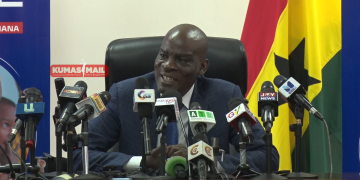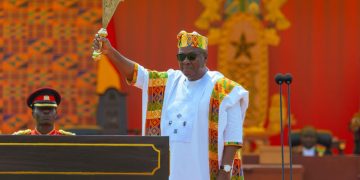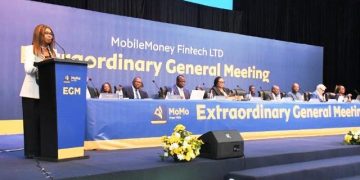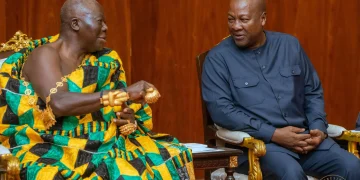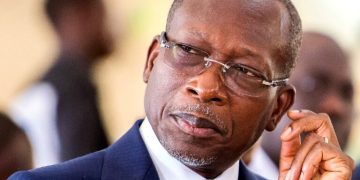Ghana’s 2026 Budget, presented to Parliament by Finance Minister Dr. Cassiel Ato Forson, outlines one of the most ambitious employment strategies in recent years, with government projecting the creation of up to 800,000 jobs across infrastructure, agriculture, education and youth development programmes.
The expansive job-creation agenda—described by budget analysts as “employment-led recovery”—builds on allocations made in the 2025 Budget but reflects a significant scale-up in public investment, particularly in road infrastructure and agro-industrial development.
Officials say the approach is designed not only to stimulate short-term jobs but also to lay the foundation for long-term productivity, export expansion, and skills development.
Roads Dominate Budget With GH¢30 Billion Allocation
The 2026 Budget’s biggest employment push comes from the road and infrastructure sector, which has been allocated GH¢30 billion, more than double the GH¢13.8 billion earmarked in 2025.
Government data shows that contracts awarded so far amount to GH¢63 billion, covering highways, bridges and constituency-level road maintenance.
Budget analysts estimate that the infrastructure programmes will generate about 490,000 jobs—the single largest contributor to the national employment target.
Economists say the impact goes beyond short-term labour opportunities.
“Road spending is both macro-stimulus and productivity-enhancing,” said a policy analyst. “It immediately absorbs labour and, in the long term, creates the connectivity needed for industrial hubs, higher export volumes and stronger regional value chains.”
Agriculture and Agro-Processing: 250,000 Jobs From Oil Palm Value Chain
Agriculture—seen as a high-impact sector for inclusive growth—features prominently in the 2026 Budget with multiple job-creation programmes.
The Oil Palm Development Policy (2026–2032) alone is expected to create 250,000 jobs across plantations, processing facilities and related value chains, supported by a US$500 million World Bank facility.
The initiative is designed to raise yields, expand household incomes and enhance foreign exchange earnings.
Analysts, however, warn of exposure to global price volatility and the risk that domestic producers could be undercut by cheaper imports.
Government is also pushing agro-industrialisation with an investment partnership from Singapore worth US$200 million for seven new agro-processing plants, expected to generate 700 direct jobs and thousands of indirect opportunities in logistics, packaging and transport.
The Nkoko Nkitinkiti programme focused on mechanisation and farmer support—has been allocated GH¢245 million and will establish 270 Farmer Service Centres, creating jobs in machinery operation, extension services and input supply.
Additional agriculture-linked allocations include GH¢828 million for enclave roads
- GH¢690 million for mechanisation centres
- GH¢200 million for the Ghana Buffer Stock Company
- GH¢100 million for aquaculture development
Education Sector Gets GH¢3 Billion for School Construction and Teacher Jobs
Education remains one of the biggest public-sector employers, and the 2026 Budget allocates GH¢3 billion to expand school infrastructure nationwide.
The allocation will finance:
- 200 new Junior High Schools
- 200 primary schools
- 200 kindergarten blocks
- 400 teacher bungalows
- 400 sanitation facilities in underserved communities
The construction phase is expected to create thousands of jobs for artisans, contractors and local suppliers, while the completion phase will trigger additional recruitment of teachers and auxiliary staff.
Analysts note that the education investment could significantly strengthen the country’s long-term human capital pool, but warn that infrastructure alone is not enough.
“Ghana must match school buildings with improved learning outcomes,” an education policy expert said. “Otherwise, the returns on infrastructure spending will underperform.”
Youth Employment: GH¢2.32 Billion for Empowerment and Apprenticeship
Beyond the traditional sectors, government is channeling substantial funds into youth-oriented programmes.
Key allocations include:
- GH¢110 million for the 24-Hour Economy Programme
- GH¢202.1 million for the National Apprenticeship Programme
- GH¢251.2 million for the Adwumawura Programme
- GH¢267.1 million for NEIP to support startups and SMEs
- GH¢2.32 billion for the newly created Ministry of Youth Development and Empowerment
- GH¢312.1 million for the National Youth Authority
The Work Abroad Programme, which government says will be “significantly scaled up” to place more Ghanaians in overseas jobs, does not yet have a specific allocation.
A new Ghana Sports Fund is expected to support employment in events, infrastructure and the sports value chain, though its allocation is also yet to be finalised.
Industrial and Manufacturing Jobs: Garment and Oil Palm Expansion
The industrial segment of the budget highlights:
- Three new garment factories projected to deliver over 20,000 direct jobs
- Seven agro-processing plants with 700 direct jobs
- Integrated Oil Palm Development, mirroring the larger 250,000-job agenda
These initiatives align with government’s broader import-substitution and export-driven industrialisation strategy.
Budget Analysts: Employment Strategy is Bold but Faces Risks
Budget and labour-market analysts say the 2026 employment strategy is bold, well-funded and diversified—but warn that execution risks remain.
Key risks include:
- Funding constraints if revenue underperforms
- Inflationary pressure that could erode job quality
- Quality risks in education infrastructure
- Price volatility affecting agriculture value chains
- Institutional inefficiencies that may delay project implementation
Despite these concerns, analysts note that the scale and breadth of the programmes could significantly reduce unemployment if delivered effectively.
Government Targets Up to 800,000 Jobs
Combining all interventions—roads, agriculture, education, industry, and youth empowerment—government estimates up to 800,000 jobs could be created in 2026.
For a country grappling with high youth unemployment and post-crisis economic recovery, the target represents both an economic boost and a political commitment.
The Finance Minister told Parliament that the budget is a “people-centred plan to restore economic stability, unlock growth, and expand opportunities for every Ghanaian.”
As parliamentary debate continues, labour groups, private-sector associations and civil society organisations will be watching closely to see how the ambitious promises translate into measurable employment outcomes.
Source: www.kumasimail.com












